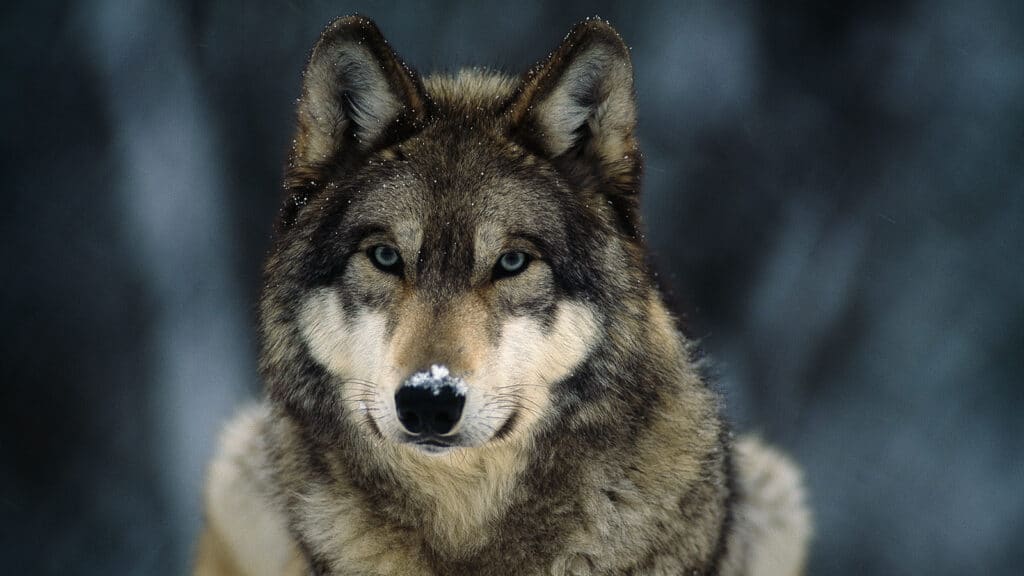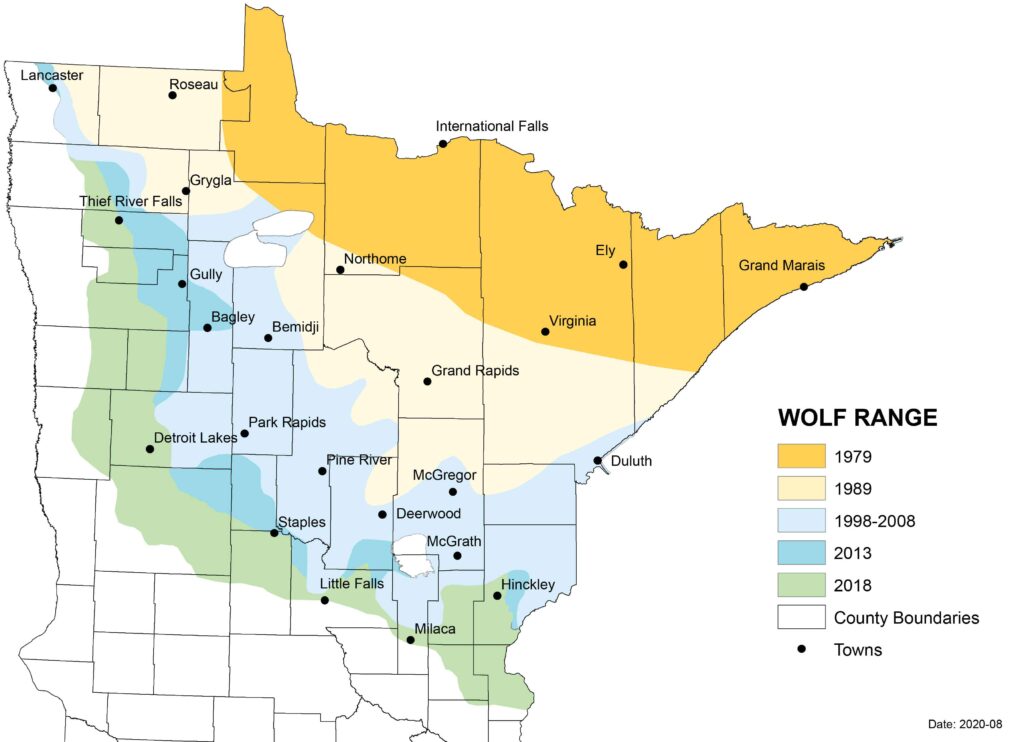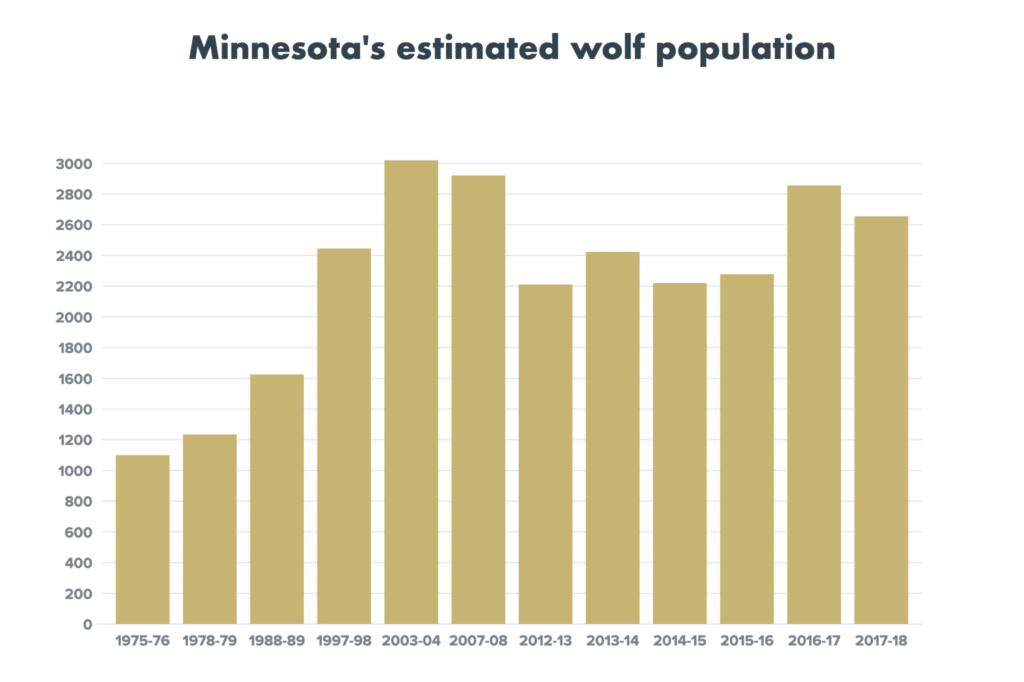
In a visit to Minnesota yesterday, Department of the Interior Secretary David Bernhardt announced gray wolves will be removed from the Endangered Species List. The animals have been listed since 1974, except for a short time off the list in 2011 to 2014.
The announcement means wolf management will be conducted by state and tribal governments. That could mean new hunting and trapping seasons, which occurred the last time wolves were taken off the list. The Trump administration heralded the move yesterday as a success story, only possible because of decades of restoration work which have brought wolves back from the brink of extinction.
“President Trump’s Administration has focused on proactive measures, including partnerships with organizations, to ensure listed species flourish to the point of recovery,” said Director of the U.S. Fish and Wildlife Service Aurelia Skipwith. “Today is a win for the gray wolf and the American people. I am grateful for these partnerships with States and Tribes and their commitment to sustainable management of wolves that will ensure the species long-term survival following this delisting.”
Wildlife advocates say the decision was not justified by science, and pledged to take legal action to keep wolves protected.
“Stripping protections for gray wolves is premature and reckless,” said Jamie Rappaport Clark, President and CEO of Defenders of Wildlife. “Gray wolves occupy only a fraction of their former range and need continued federal protection to fully recover. We will be taking the U.S. Fish and Wildlife Service to court to defend this iconic species.”
On the road to recovery, or the end of the road?
There was a bounty for wolves in Minnesota from 1849 until 1965. The population hit a low point in the 1960s, with 350-700 wolves still in far northeastern Minnesota, having been eliminated from Wisconsin, Michigan, and other parts of their range.
Today, there are estimated to be about 2,700 gray wolves in Minnesota, and about 6,000 total in the lower 48 states. Prior to European immigration, gray wolves were found throughout what is now the United States.
The Minnesota Department of Natural Resources responded to the delisting announcement by saying the agency believes wolves have indeed recovered in Minnesota, but that a blanket delisting across all states where they are found “may not be warranted.”
The DNR is in the middle of receiving public comment on an update to the state’s wolf management plan. In response to the delisting, the agency said it would extend the comment period from a planned ending on Nov. 1 until Nov. 20 to give the public a chance to respond in light of the announcement.
The DNR has conducted public opinion surveys to help inform its wolf management. The most recent poll found that 87 percent of Minnesota residents believe maintaining a wolf population is important. Two-thirds of the state’s hunters feel the same way, despite the competition for their quarry that wolves represent.
One prominent Minnesota deer hunting organization voiced its support for the federal decision.
“[Minnesota Deer Hunters Association] is pleased that the Fish and Wildlife Service has delisted the gray wolf again. The wolf has met all recovery goals in Minnesota for decades and Minnesota DNR has shown that it can responsibly manage a wolf season,” stated Minnesota Deer Hunters Association President Denis Quarberg.
Minnesota wolf advocates joined national counterparts in criticizing the decision. They say removing federal protections could lead to inhumane treatment of wolves, disrupt pack dynamics resulting in a far larger impact than just hunting fatalities, and actually worsen human-wolf conflict.
“This political decision to remove federal Endangered Species Act protections for the wolf is against public sentiment, sound science, and will destroy our nation’s endangered species,” said Maureen Hackett, founder and president of Minnesota-based wolf advocacy group Howling For Wolves. “We need a nonlethal wolf plan and continued funding for prevention methods for farmers and ranchers to ensure an intact and healthy wolf population, because the wolf is vital for our ecology and the legacy of future Minnesotans.”
But elected representatives from Minnesota who represent areas with farming and wolves welcomed the decision.
“With Minnesota’s whitetail firearm season so close, this announcement could not have come at a better time, as empowering state agencies to responsibly manage the gray wolf will help to conserve our deer herd for generations while putting cattle farmers at ease,” said U.S. Representative Pete Stauber (MN-08).
Stauber’s district includes northeastern Minnesota, the heart of wolf country. U.S. Representative Collin Peterson (MN-07), a Democrat from western Minnesota, also said he supports the decision.
“For years, I have called for this change on behalf of livestock owners and rural communities in Minnesota,” Peterson said. “This final rule allows Minnesota to set rules and protections for gray wolves that are more responsive to the needs of local communities.”
A coalition of environmental groups said the decision should meet the same fate as previous attempts to take gray wolves off the Endangered Species List.
“Again and again the courts have rejected premature removal of wolf protections,” said Collette Adkins, Minnesota-based carnivore conservation director at the Center for Biological Diversity. “But instead of pursuing further wolf recovery, the Fish and Wildlife Service has just adopted its broadest, most destructive delisting rule yet.”
The final rule will be effective 60 days after publication in the Federal Register. The earliest it will take effect is Jan. 1, 2021. The U.S. Fish and Wildlife Service says it will monitor wolf populations for five years to “ensure the continued success of the species.”
More information:
- Trump Administration Returns Management and Protection of Gray Wolves to States and Tribes Following Successful Recovery Efforts – Dept. of Interior
- Minnesota DNR statement regarding USFWS decision to remove the wolf from the endangered and threatened species list
- Gray Wolf Timeline for the Contiguous United States – International Wolf Center
- Wolf management – Minnesota DNR



